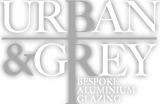If you’re in the early stages of designing your dream home, it’s possible that this is the first time you’ve ever explored windows and doors in more depth. Everyone’s got to start somewhere, after all! If that’s the case, then we’d definitely recommend giving this guide on the different types of glazing a read.
Whatever type of window and whatever type of home you’re planning to build, the chances are you’ll find your dream material somewhere on this list!
Annealed Glass
This is your ‘standard’ flat glass. Common glass tends to break into large, jagged shards, which is why in recent years it’s become less popular for those people seeking safer and more secure windows and doors. It is worth noting, though, that even the standard glass produced today is of a very high quality and can still be very effective when used in double glazing.
Toughened Glass
As you’ve probably gathered from the name, toughened glass is treated in a way that makes it far more resistant to breakage than the traditional material. When it does break, it does so in a safer manner, collapsing into smaller, crumblier pieces.
Toughened glass is made using a thermal tempering process: a sheet of traditional glass is heated to above the annealing point – 600 degrees Celsius. Once it reaches this point, the surfaces are cooled rapidly whilst the centre of the pane is left at the same temperature. This variation in cooling rates produces different physical properties: a mix of tensile and comprehensive stresses. In turn, this gives the glass a higher resistance to both traditional forms of breakage and to heat-related damage.
As you might imagine, toughened glass has a range of applications in a number of industries: in the UK, it’s used for everything from haulage to rental cars! It’s also extremely popular in doors and windows, simply because the strength and toughness give homeowners confidence that their homes are safer with it.
Laminated glass
This form of glass is created by taking two or more sheets of annealed glass and then feeding the gaps between them using interlayers of polymeric material. There are two main techniques for this: to use heat and pressure to sandwich the PVB between the panes, or to set the panes of glass in place and then pour the resin between them.
There are a number of pluses to laminated glass. The interlayer holds the panes in place, even if they’re broken: this makes it one of the least dangerous forms of glass available to modern homeowners. Many modern skylights are created using laminated glass for their interior and tougher glass for the exterior, the combination offering the best of both worlds in terms of safety and security.
Mirrored glass
Though it’s a quite a unique look, mirrored glass is still used in many modern builds. Mirrored glass is relatively simple to create: a metal coating made of silver, aluminium, gold or chrome is applied to the glass and then sealed with an additional protective layer. It’s also possible to create one-way mirrors by using a thinner metal coating and then not sealing the window.
Patterned glass
Patterned glass is simply traditional annealed glass, which is then heated and passed between rollers whose surfaces hold the ‘mould’. Patterned glass is typically used internally more than for external features.
Get in touch
These are the main forms of glass used for domestic glazing. However, we know that you might have your own ideas or simply want to know more about the different materials. If that’s the case, then give Urban & Grey a call today and we’ll help you find the perfect type of glass to suit your design.
